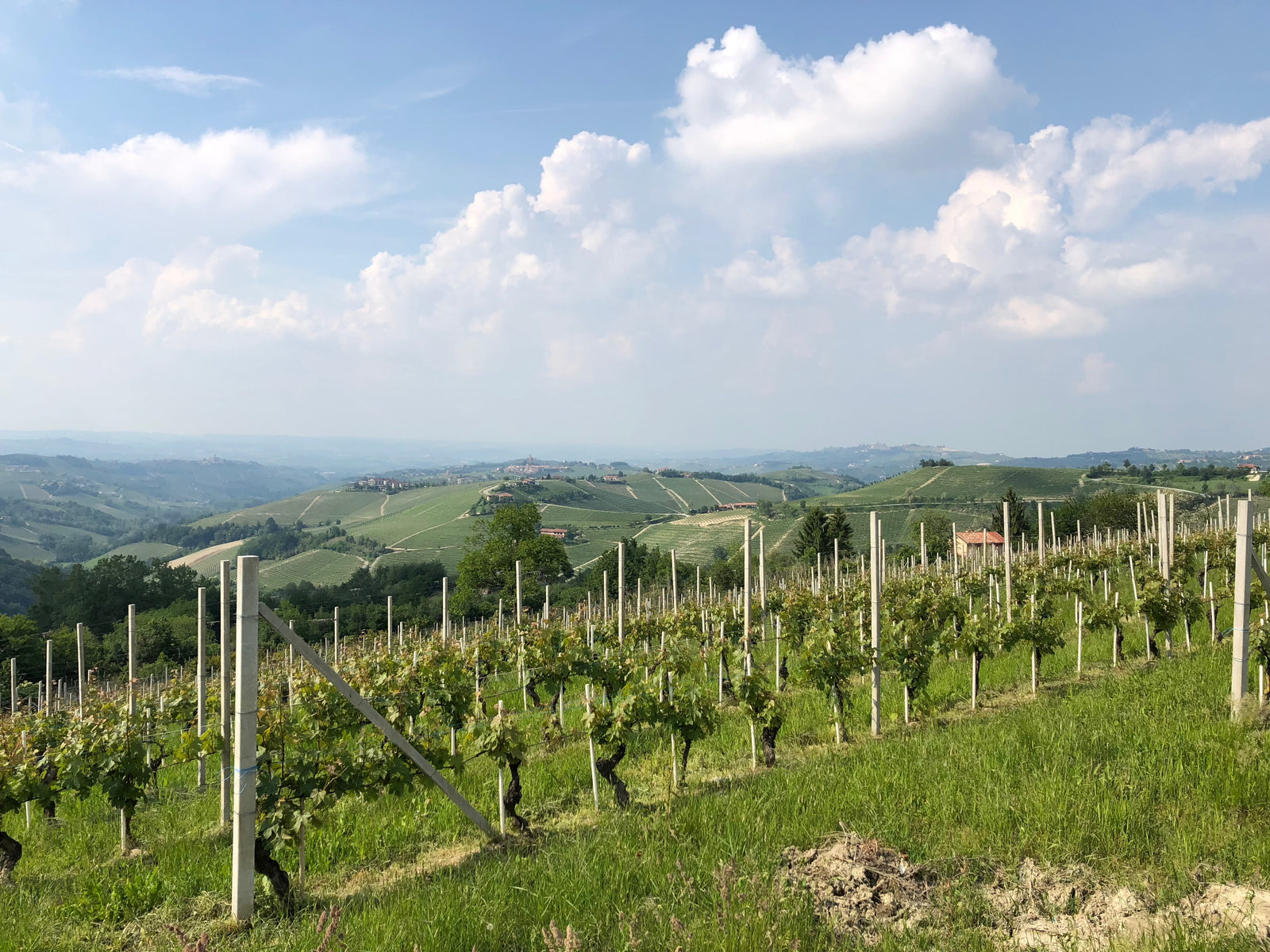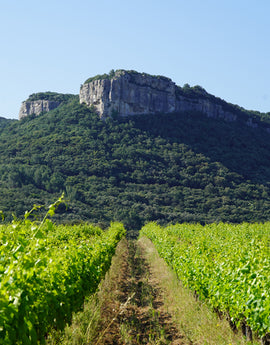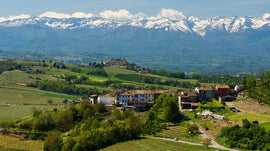When we consider the wines of Piemonte, or Piedmont, we usually think of Barolo and Barbaresco from Nebbiolo grapes, or Barbera and Dolcetto for reds and Arneis or Gavi for whites. But Piemonte is home to other indigenous varietals that don’t have the same pedigree as some of the above, but that are making wines just as interesting and enjoyable. Some of you may already be familiar with wines from grapes such Timorasso, Nascetta, Grignolino, Brachetto, etc. The wines we are presenting this month are from this less familiar group of grapes: Erbaluce and Freisa, wines that are easily enjoyed for their freshness, especially in the summer months when the palate craves more uplifting sensations.
Erbaluce and Freisa are certainly not novelties in Piemonte, where these varietals have been known for centuries. Erbaluce di Caluso, from a small town north of Torino next to Valle d’Aosta, is a white varietal that even in 1800 was well appreciated by the more wine-snobbish French, which, when talking about wine, is pretty impressive. The wine won a gold medal at the Paris Exposition in 1855 and was served at the court of Napoleon III. Erbaluce, due to its high acidity, is well suited for making excellent sparkling wines. The thick-skinned berries can stand a long ripening period on the vines to bear fruit for great sweet late-harvest wines as well. Freisa varietal’s name comes from the Latin word fresia meaning strawberry, and this reference becomes evident at the first whiff of Freisa wine. The first acknowledgment of this wine was documented back in 1517 as Fresearum, cited for being more expensive than any other wines produced in the Langhe area, where now Barolo and Barbaresco are the dominant kings. Recent studies have shown that Freisa has close ampelographic and viticultural similarities with Nebbiolo, and this has helped us look at the varietal with different eyes. It is more rustic than Nebbiolo but with a naughty, youthful presence.
Cieck, Erbaluce di Caluso DOCG 2020 Region Piemonte
About the Winery: Founded in 1985, Cieck is overseen by Remo Falconieri, a retired typewriter designer for Olivetti and the son of farmers who traveled to France to learn how to make sparkling wine. The winery was one of the original five producers in San Giorgio Canavese, and a number of other top estates in the area consult with Remo today. Now in his eighties, Remo labors daily in the cellar alongside his daughter Lia, supervising the 13 hectares of vineyards they own and producing some of Alto Piemonte’s most elegant Erbaluce. The cradle and home of the appellation Erbaluce di Caluso is the Moraine Amphitheatre of Ivrea, created by the glacier that descended from the Valle d’Aosta during the Pleistocene. The soils are made up of the debris that was transported and placed by the glacier between 900,000 and 19,000 years ago, during ten ice ages. The resulting soil is rich in stone and consists mainly of sand, stones, and pebbles.
About the Winemaking: The grapes selected for this wine are gently pressed whole-cluster in order to preserve their ripe-fruit notes. The stems, skins, and seeds are removed immediately after pressing. During fermentation, the temperature is kept low to capture the singular aromatics of Erbaluce. The wine is then left to age in contact with the fine lees for at least two months in stainless-steel tanks. Malolactic fermentation does not take place. It is traditionally bottled the following spring. The grapes are on Pergola-trained vines, planted predominantly in the early 1970s as well as the early 1980s. The soil is a sandy mix of moraine-gravel rich in fossils.
Tasting Notes: Pale light yellow with greenish reflections in the glass, with a slight fizziness when the bottle is just opened that quickly disappears. Notes of lemon verbena, green apple, and beeswax at the nose. Crisp acidity and salty minerality frame the fruit when first sipping it. Pleasant and refreshing with a nice finish.
La Miraja, Freisa d’Asti DOC 2020 Region Piemonte
About the Winery: The estate is nestled within the original castle of Castagnole Monferrato, constructed in the 11th century and retrofitted to serve as a cellar in the 1400s. In this armory-turned-cellar, Eugenio Gatti turns out Barbera d’Asti, Freisa, Grignolino, and Ruché. A seventh-generation viticulturist, Eugenio personally tends to the oldest vineyard of Ruché in Castagnole Monferrato, the original birthplace of Ruché. It is here that Eugenio Gatti devotes his life’s work to producing only 840 cases of wine each year. There are seven municipalities that form a small wine-producing district within the Monferrato Astigiano zone on the left bank of the Tanaro river. The hilly slopes are rocky. The deep soils of low permeability are originally alluvial with fossil deposits (the area was once covered by the sea). Generally speaking, the soil composition is predominantly loam with sand and clay. The subsoil has a chalk vein (and in fact, one of Italy’s largest chalk quarries is located in this area).
About the Winemaking: The estate fruit is from the Majole vineyard situated 250 meters above sea level with southwest exposure and calcareous-red clay soils. These vines were planted in 2006 with 5,000 vines per hectare trained in the guyot style. Only 7.7 tons per hectare are harvested. Hand-harvested fruit is destemmed and then crushed by basket press into stainless-steel tanks, where it remains in contact with the skins for 10 days while native fermentation occurs. Following spontaneous malolactic fermentation, the wine rests in the tank for 3 months and then an additional 4 months in the bottle prior to release. Only 2,000 bottles are made.
Tasting Notes: Light garnet in color with pale purple hues. Fresh earthy tones with accented strawberry and raspberry notes. Crunchy and spicy fruitiness that makes for a perfect chilled summer red.





